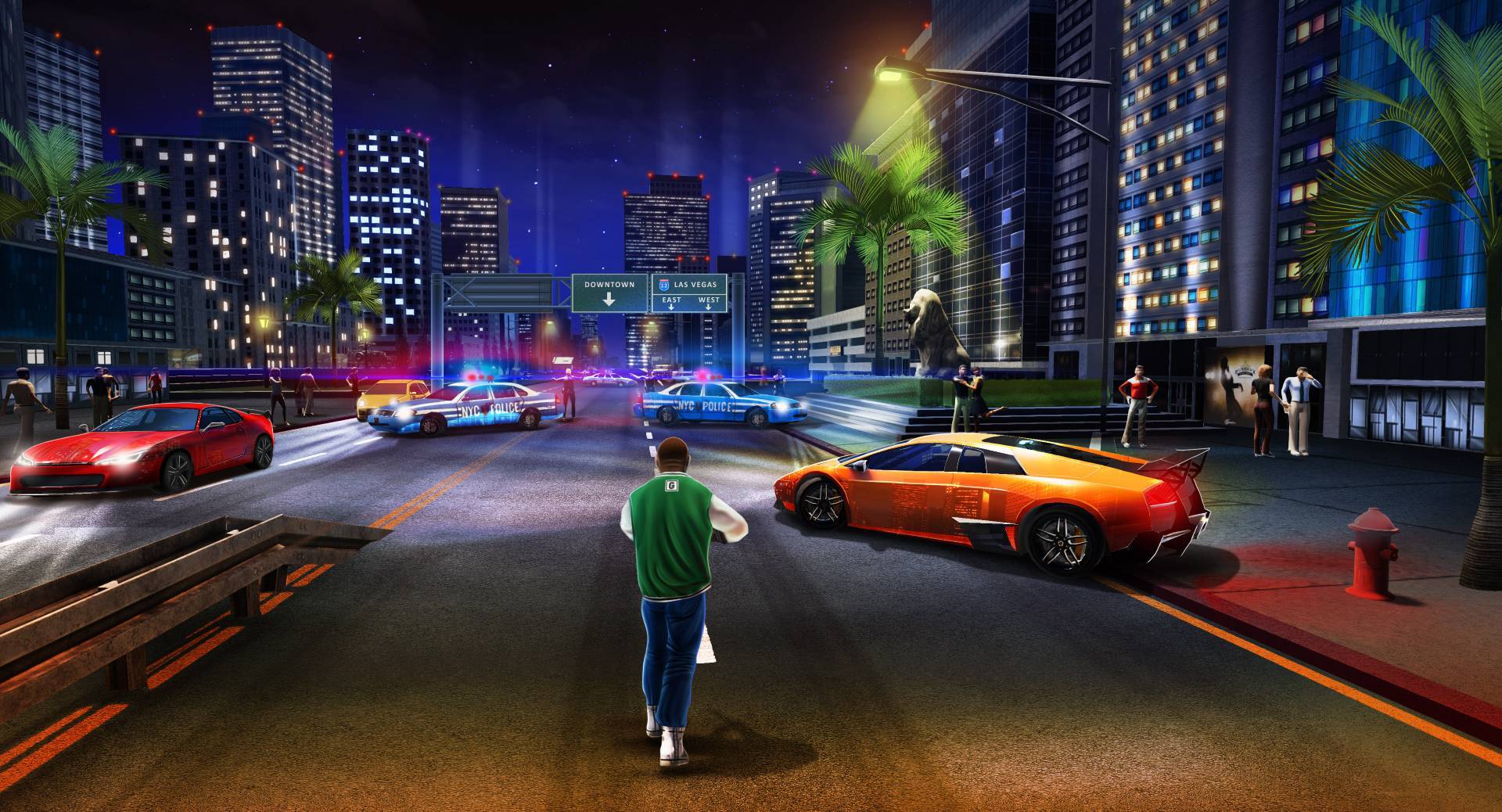Welcome to the world of “City” – a game that combines strategy, creativity and urban planning in one immersive experience. In this digital metropolis, you’ll have the power to shape every aspect of your city: from designing and building its infrastructure, to managing its economy and responding to the needs of its citizens. With endless possibilities and challenges, “City” offers a unique opportunity to unleash your inner planner and build the utopia of your dreams. So roll up your sleeves and get ready to enter a world where the sky’s the limit – because in “City”, anything is possible.
1. “Urban Simulations: The Rise of Virtual ‘City’ Games”
Virtual city games have been gaining popularity in recent years, as players seek to experience the thrills and challenges of creating and managing their own metropolis. These games allow players to build and run their own city, making decisions about infrastructure, economics, public services, and more. With their realistic graphics, intricate gameplay mechanics, and social features, urban simulations offer a glimpse into the complexities of city life, and the joys and struggles that come with managing a bustling urban center.
Some of the most popular urban simulation games include SimCity, Cities: Skylines, and Tropico, each with its own unique gameplay elements and challenges. In SimCity, players must balance the needs of their citizens with the realities of city planning, designing a thriving metropolis while avoiding common pitfalls such as traffic congestion, pollution, and crime. Cities: Skylines lets players take control of every aspect of their city, from zoning and taxation to public transportation and emergency services. Tropico, on the other hand, puts players in the role of a Caribbean dictator, tasked with building a prosperous and stable nation while managing political, economic, and social challenges. Whether you’re looking to create your own utopia or test your skills as a ruthless leader, urban simulation games offer endless hours of entertainment and strategic gameplay.
2. “Building Your Dream Metropolis: Tips and Tricks for ‘City’ Players”
Building Your Dream Metropolis: Tips and Tricks for ‘City’ Players
As a ‘City’ player, building your dream metropolis is the ultimate goal. Whether you’re a seasoned player or just starting out, here are some tips and tricks to help you create a thriving city:
- Plan ahead: Before placing any buildings or infrastructure, it’s important to have a plan. Consider factors such as traffic flow, access to resources, and zoning restrictions. Sketching out a rough city layout can help you visualize how everything will come together.
- Diversify your economy: In order for your city to grow and prosper, you’ll need to have a diverse range of industries. Build residential areas, commercial zones, and industrial sectors to attract different types of workers and businesses.
- Invest in infrastructure: Building roads, bridges, and public transportation will not only improve traffic flow, but also boost the overall happiness and satisfaction of your citizens.
Remember that building a metropolis takes time and patience. Don’t be afraid to experiment and try new things – even if they don’t always work out. With dedication and strategic planning, you’ll be able to create the city of your dreams.
- Maintain a healthy budget: Keep track of your income and expenses to avoid going into debt. Cut back on unnecessary spending and invest in projects that will generate revenue.
- Listen to your citizens: Pay attention to what your citizens are saying. If they’re unhappy with something, try to address their concerns. Offering healthcare, education, and other public services can also help improve the quality of life in your city.
- Plan for emergencies: Disasters can strike at any time, so it’s important to have a plan in place. Build emergency services such as fire stations and hospitals, and make sure you have enough resources stockpiled to withstand a crisis.
3. “The Evolution of ‘City’ Games: From SimCity to Cities: Skylines”
For decades, city-building games have been entertaining gamers worldwide. The genre has come a long way since the early days of pixelated graphics, limited technological capabilities, and SimCity’s simplistic gameplay.
Today, we have Cities: Skylines, a modern-day city-building simulator that has attracted millions of fans worldwide. As game development technology continues to advance, gamers can expect to see more sophisticated features, realistic graphics, and innovative gameplay mechanics in future city-building games. Here are some ways that city-building games have evolved over the years:
- Improved Graphics and Technology: Today’s city-building games boast realistic 3D graphics, which immerse players in the bustling streets, towering skyscrapers, and idyllic urban landscapes of their virtual cities.
- Greater Complexity: Modern city-building games offer a more intricate array of features and gameplay options, including zoning laws, transportation systems, and emergency services.
- Bigger Maps: With more powerful technology, modern city-building games offer vast, sprawling maps that let players create sprawling urban landscapes.
Overall, the evolution of city-building games from SimCity to Cities: Skylines reflects a steady move towards more complex, realistic, and engaging gameplay experiences. With each iteration, developers push the boundaries of what’s possible, creating games that are not only fun but also educational and inspiring.
4. “Exploring the Connection Between ‘City’ Games and Real-World Urban Planning
When we hear the term “city games,” we may think of SimCity, Cities: Skylines, or any number of virtual urban planning simulations. These types of games have been around for decades, allowing players to design, build, and manage their own cities. But how do these games relate to real-world urban planning? Here are some key connections between the two:
- Education: City games can be a valuable tool in educating people about the complex process of urban planning. Players can learn about zoning, transportation, economics, and more while having fun.
- Visualization: City games allow us to see the effects of our planning decisions in a visual and interactive way, which can help us understand the consequences of our actions.
- Innovation: City games can inspire innovative ideas and solutions for real-world urban planning challenges. By experimenting with different approaches in a virtual setting, players may be able to develop new and creative ways of addressing urban issues.
While city games certainly have their limitations and may not perfectly mirror the complexities of real-world urban planning, they can still be a useful tool for learning, exploration, and innovation. As technology continues to advance, we may see even more connections between virtual and real-world urban planning emerge.
As the final whistle blows and the players leave the field, the excitement of the City game still lingers in the air. Whether you’re a die-hard fan or a casual spectator, there’s no denying the thrilling atmosphere that accompanies every match. From the roar of the crowd to the precision passing and celebratory goals, City game is an experience like no other. So the next time you have the chance to witness it all firsthand, grab your scarf and join in the fun. Who knows – maybe you’ll even witness a historic moment or two. Until then, we’ll be eagerly counting down the days until the next kickoff.



